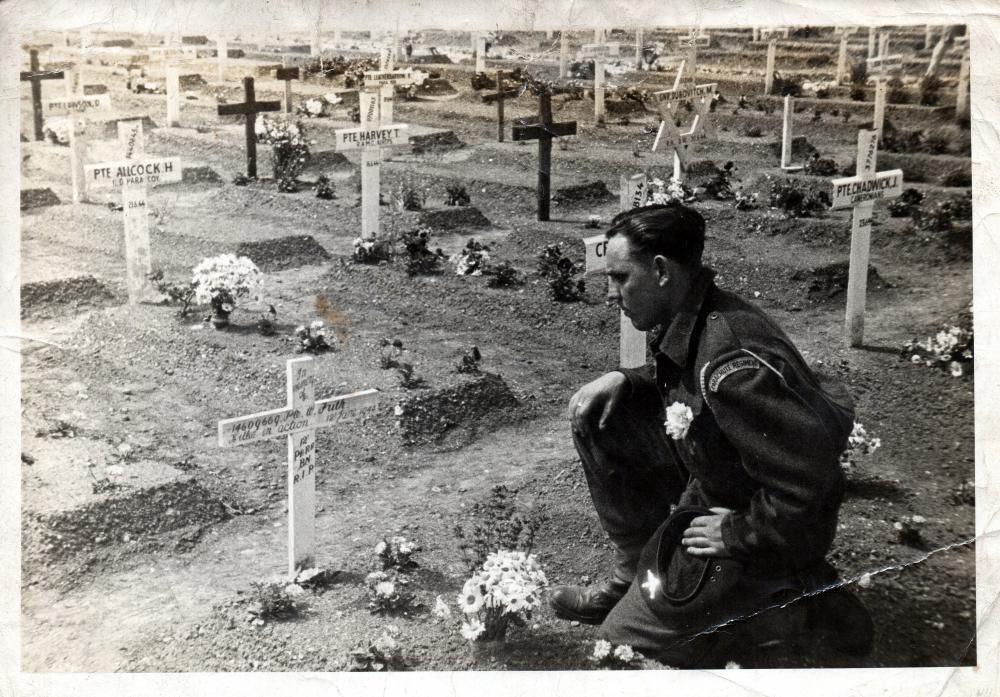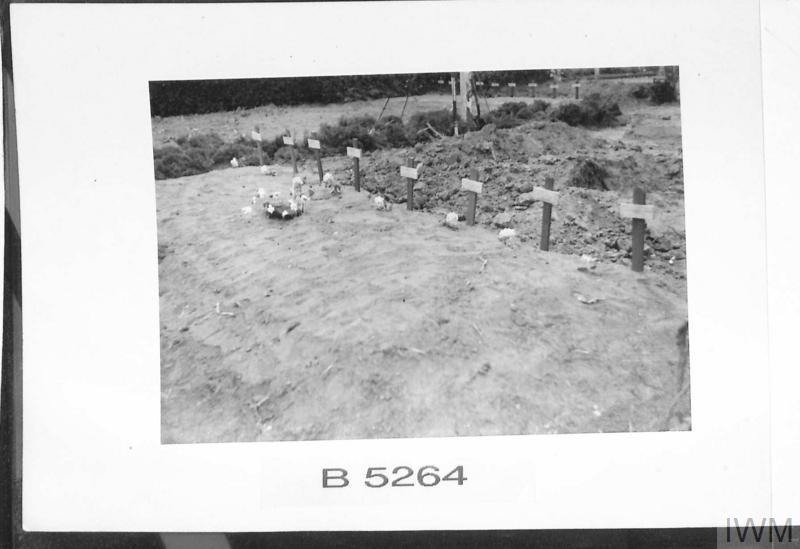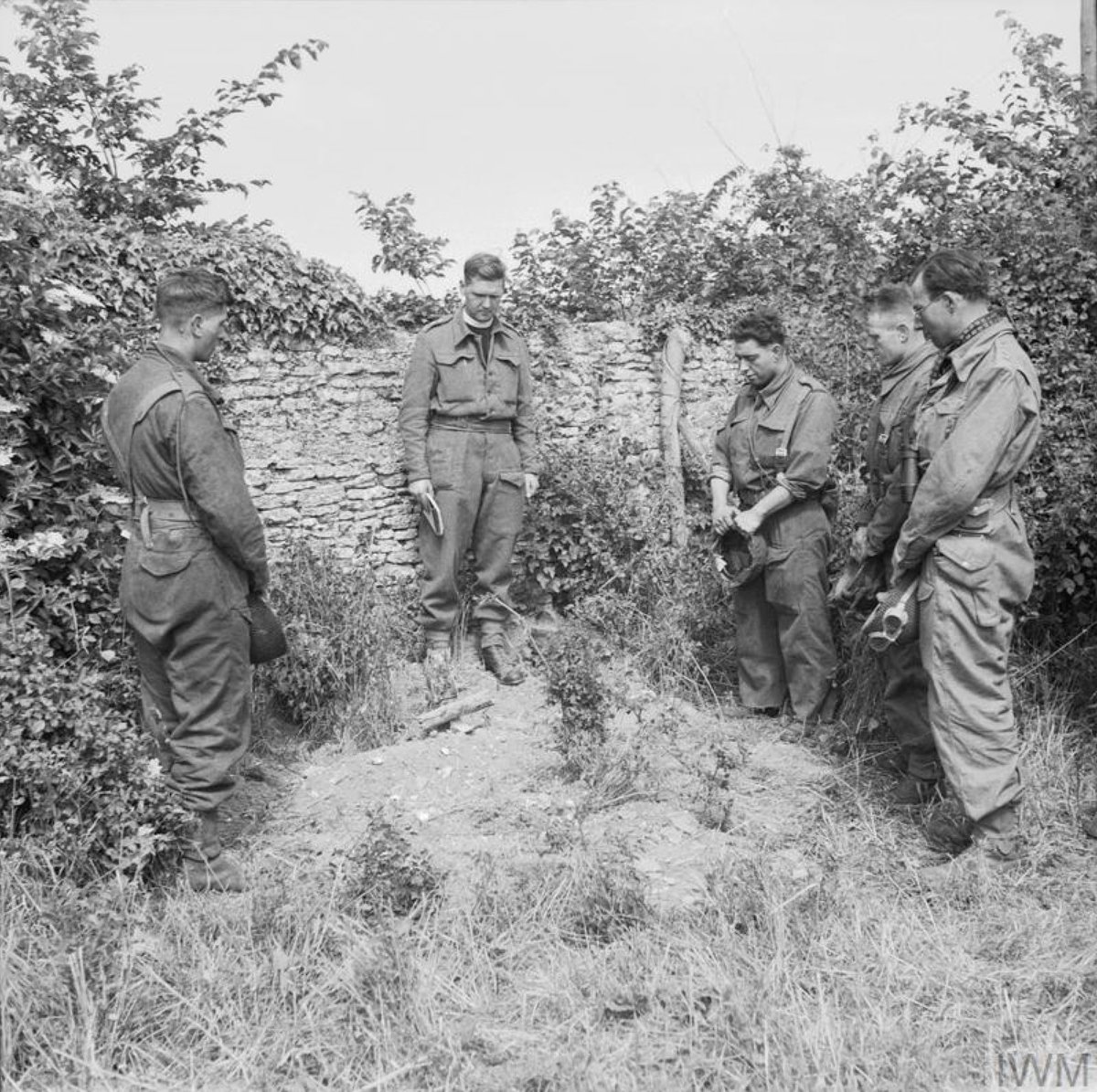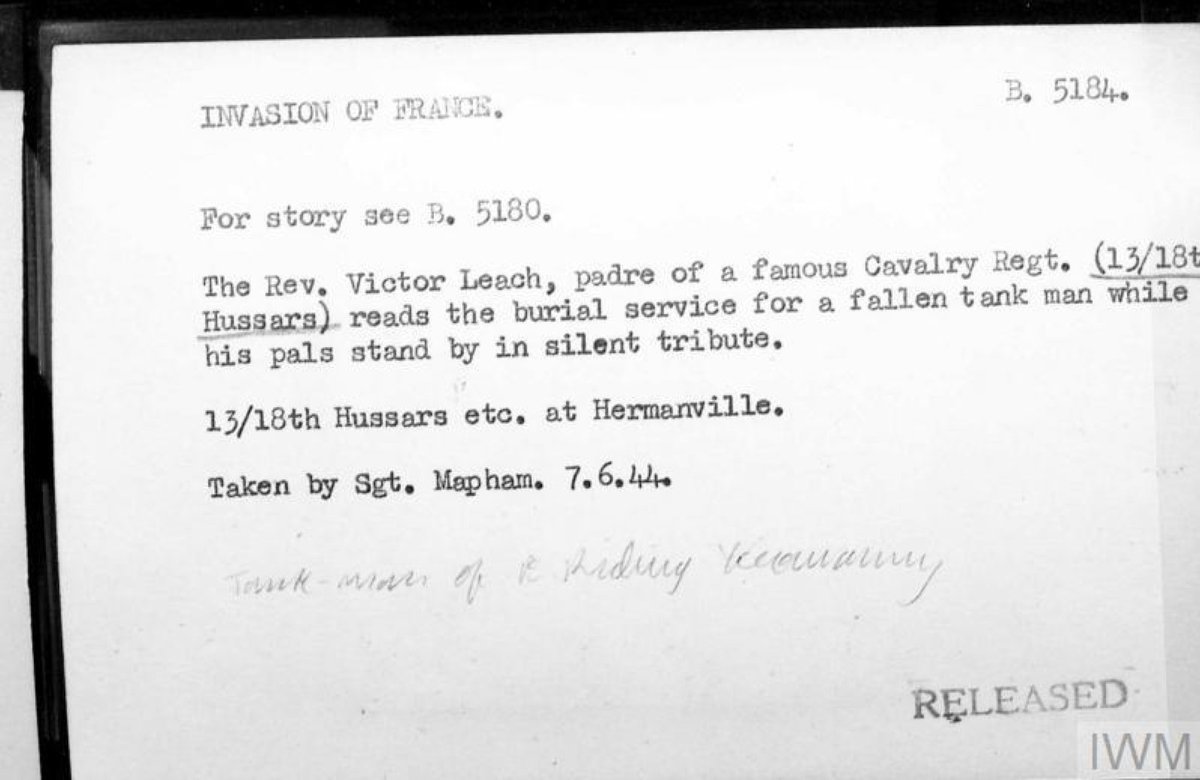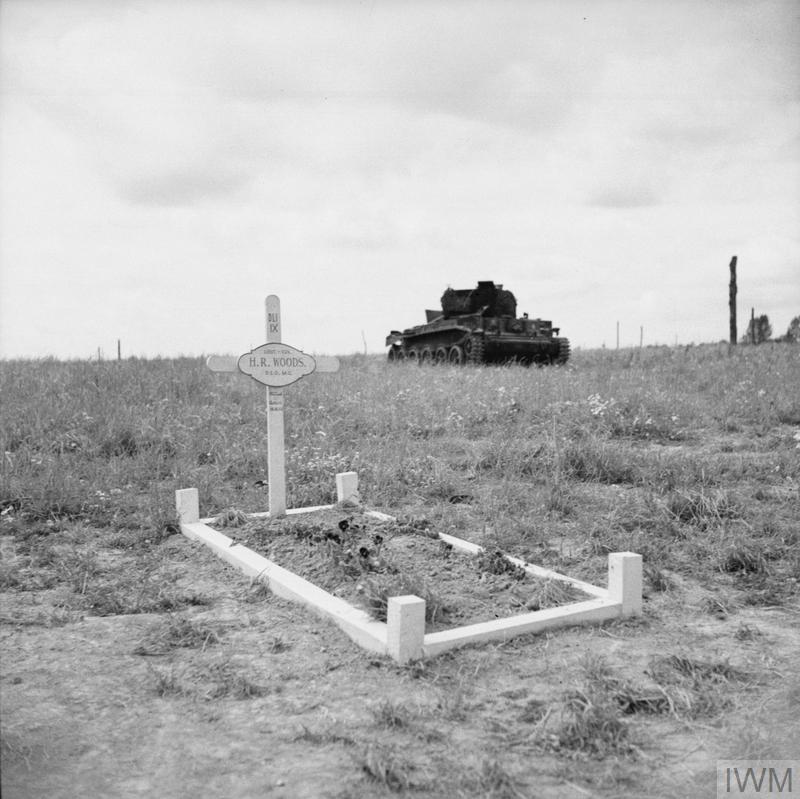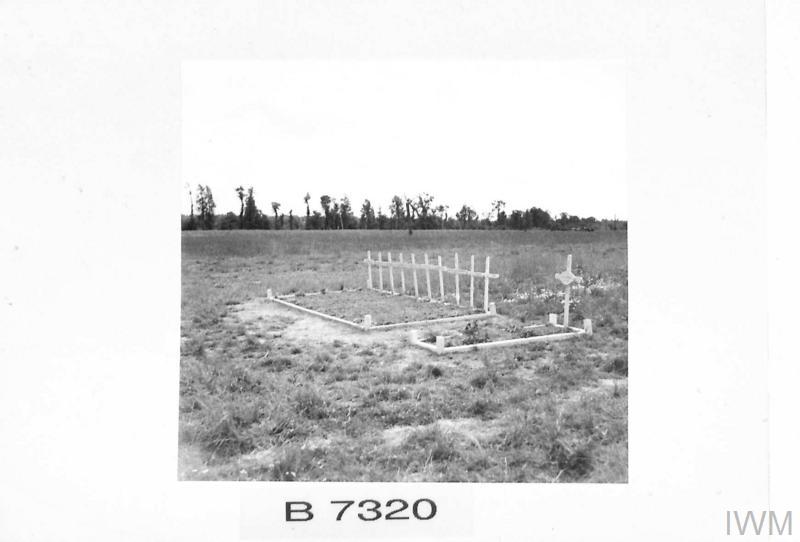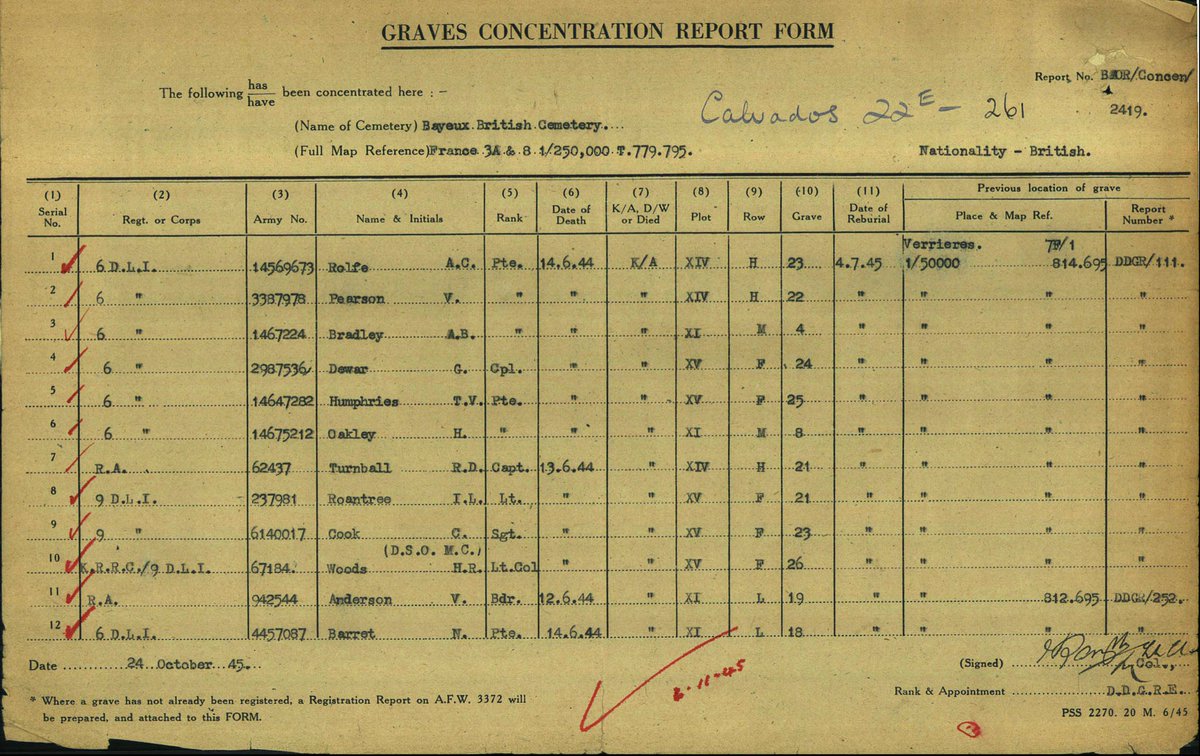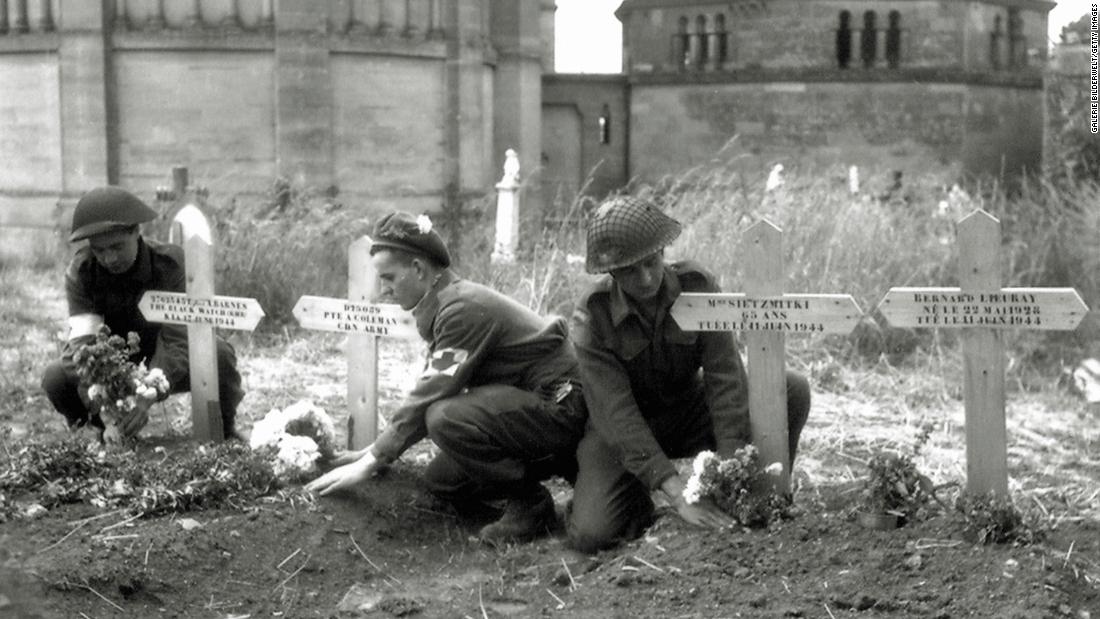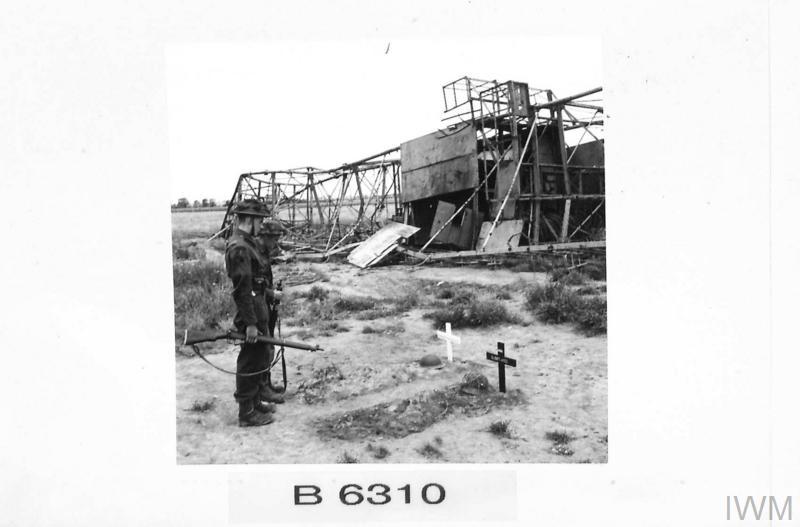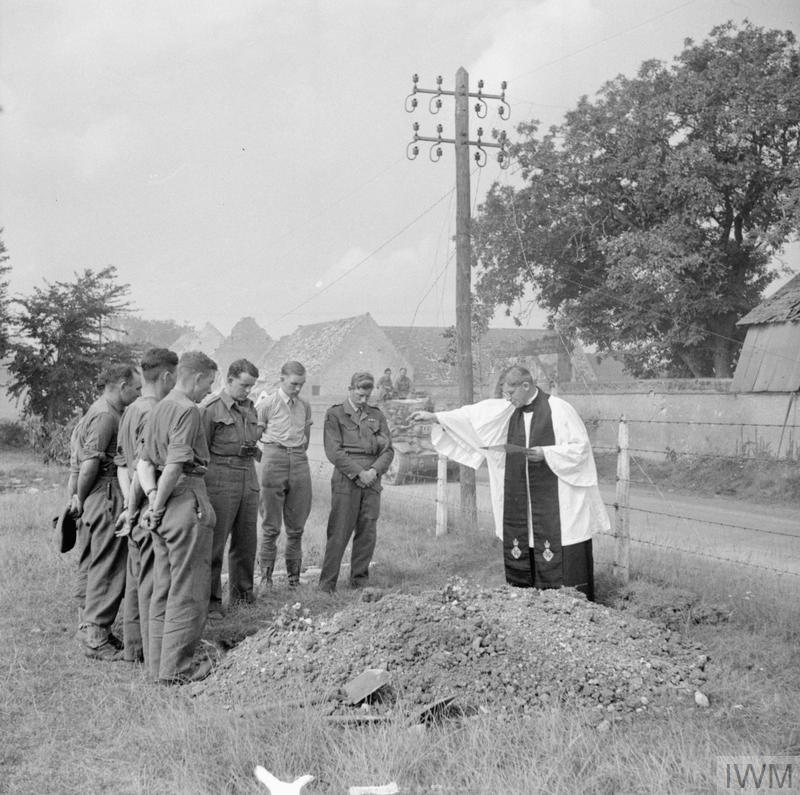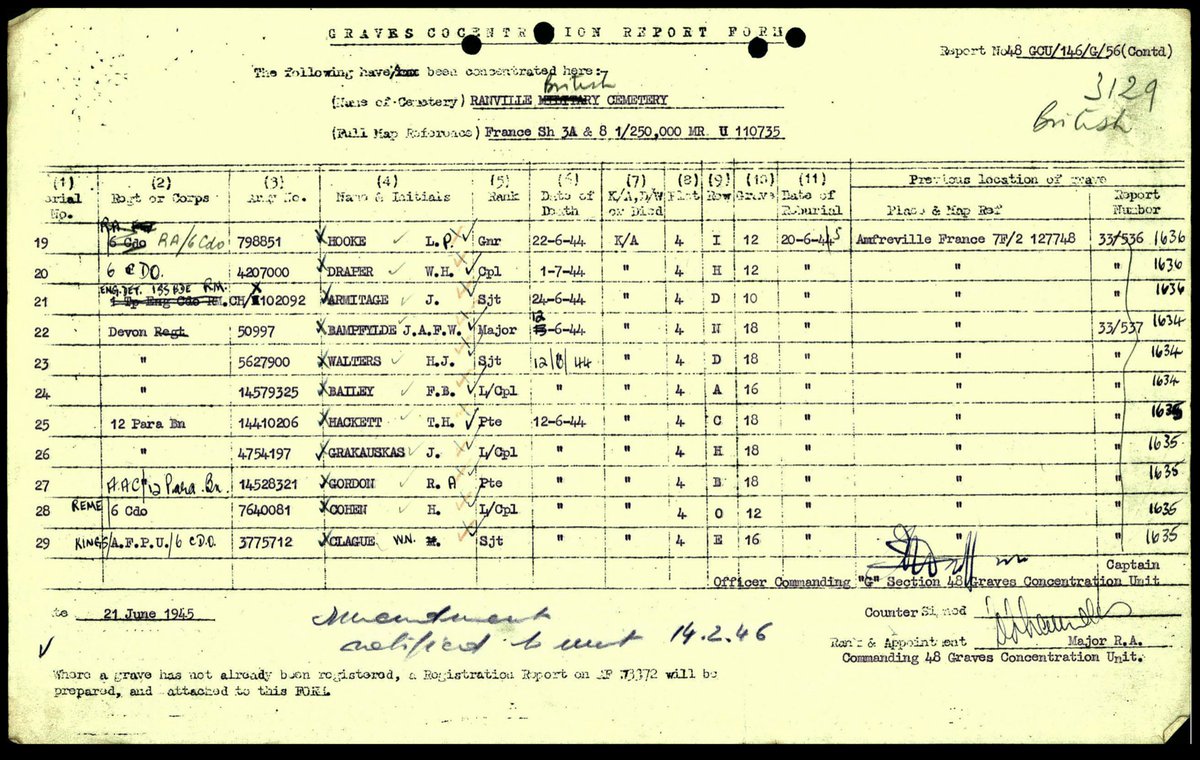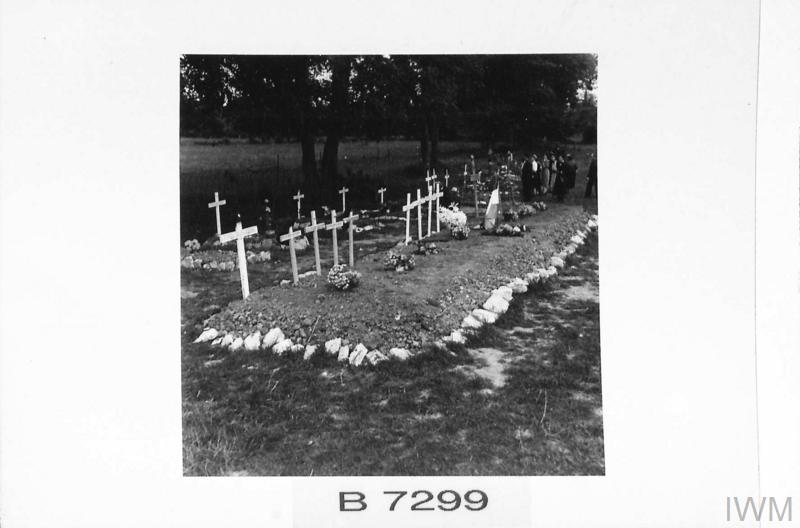After a visit to the archives last week I came across an interesting order in relation to 'Burials'. Issued to the 27th Armoured Brigade ahead of Operation Overlord, section 29 lists the conditions for the burial of the dead.
1. Burial site for those killed on beaches and in assembly areas will be reserved by Beach Sub area immediately inland of beaches.
Two examples of these areas that spring to mind is one a hundred yards to the east of Montgomery's statue on Rue de la Mer, Colleville-Montgomery. The other close to Canada House in Bernieres. The men buried there would be moved at a later date during grave concentrations.
2. Units may arrange temporary cemeteries in case of need, but isolated site are to be avoided. Whenever possible enquiry should be made of the nearest formation H.Q with a view to use of a site already established.
An isolated site can be seen here on June 7th. Trooper Barton, 1st East Riding Yeomanry had been killed in action on D-Day. The crew returned to the tank the next day, sadly they had to cut him into two with a knife to remove him. Harrowing but the reality of what the men faced.
Maybe a reason for being buried in an isolate grave was that it wasn't practical or suitable to move him a distance. Trooper Barton was buried in a back garden of a house in Hermanville. He was moved to Ranville War Cemetery on the 23/07/1945.
3. Burial of the dead will be carried out as early as possible.
4. Single graves should not be more than 6'6" long, 2' wide, 5' deep. They should be not more than 1' apart; and a path not exceeding 3' wide should be left between rows of graves.
These two photographs show a single grave firstly of Liet-Colonel H R Woods DSO MC that appears to fit those dimensions for length and width. To the side of him is a small plot of ten further burials. Montgomery had asked for these photographs to be taken of Woods grave.
Lt-Col Woods and the other men were moved from this location just north of Les Verrieres to Bayeux British Cemetery on 04/07/1945 where they were reburied.
5. Timber for grave marking will be provided in RE dumps but if at any time this is not available bottles or tins should be used. These will be half buried, open ends downwards and particulars of the burial written in black lead pencil on a sheet of paper will be placed inside.
I have searched IWM for any photographs of bottles or cans protruding from graves but have not found any yet. In most cases a timber grave marker has been visible. Men of 48 RM Commando buried here at St Aubin on the 8th June '44 are clearly marked with wooden crosses.
6. The Green (octagonal) identity disc will be left on the body. The red (circular) disc will be detached and forwarded to 2nd Echelon with the personal effects...
6 cont/
In the case of US dead, one identification tag will be buried with the body and the other will be securely attached to the grave a marker.
In the case of US dead, one identification tag will be buried with the body and the other will be securely attached to the grave a marker.
7. When dead of other services or allied forces are buried the same procedure as for British dead will be followed. Returns will show clearly the nationality and service. Personal effects will be disposed of as for British dead, except that cash will be handed to the Field...
7 cont/
cashier and the receipt forwarded to GHQ 2nd Echelon with other effects. The package and inventory will be clearly marked with nationality and service.
The photograph above showing not just Canadian Soldiers being buried in accordance but also two French civilians.
cashier and the receipt forwarded to GHQ 2nd Echelon with other effects. The package and inventory will be clearly marked with nationality and service.
The photograph above showing not just Canadian Soldiers being buried in accordance but also two French civilians.
8/ Enemy dead will be buried separately.
This photograph showing two separate graves for a British and German solider. The above orders still adhered as per number 4 & 7. German plots within CWGC cemeteries today are also separate from the British & Commonwealth graves in keeping with the order.
9. All officers must be prepared to conduct a short form of burial service. The fact that comrades have been "properly" buried has a good effect upon morale.
The above photograph is captioned with 'an everyday scene on the battlefield'. The effects of this would live on with many of the men and women who witnessed the death during the SWW. It would have been hard to escape scenes like this as they passed through villages and towns.
Even men from the Army Film and Photographic Unit would get caught up in the crossfire of battle. Sgt Norman Clague, landed on D-Day capturing images, he would become the first AFPU photographer to be killed in NW Europe.
Originally buried close to this location in Amfreville he would be reburied in Ranville War Cemetery on the 20/06/1945.
Another view of his grave amongst others. The local villagers reminded daily of the battles to liberate Normandy with these men at rest here for over a year since D-Day. It is well documented of the care local french people gave to the graves and making visits to lay flowers.
This thread was really to highlight an order I'd never seen before, possibly taking for granted what would happen. It's clear the detail of planning ensured respect for all who would make the sacrifice during war. More importantly to try and ensure all had a marked grave.
All information of the photographs used and sources are included in the detail. It's been interesting to research and look at the order comparing it to IWM images of field graves. If anybody has a photos of a grave with an upturned bottle or tin can, please post to this thread.

 Read on Twitter
Read on Twitter